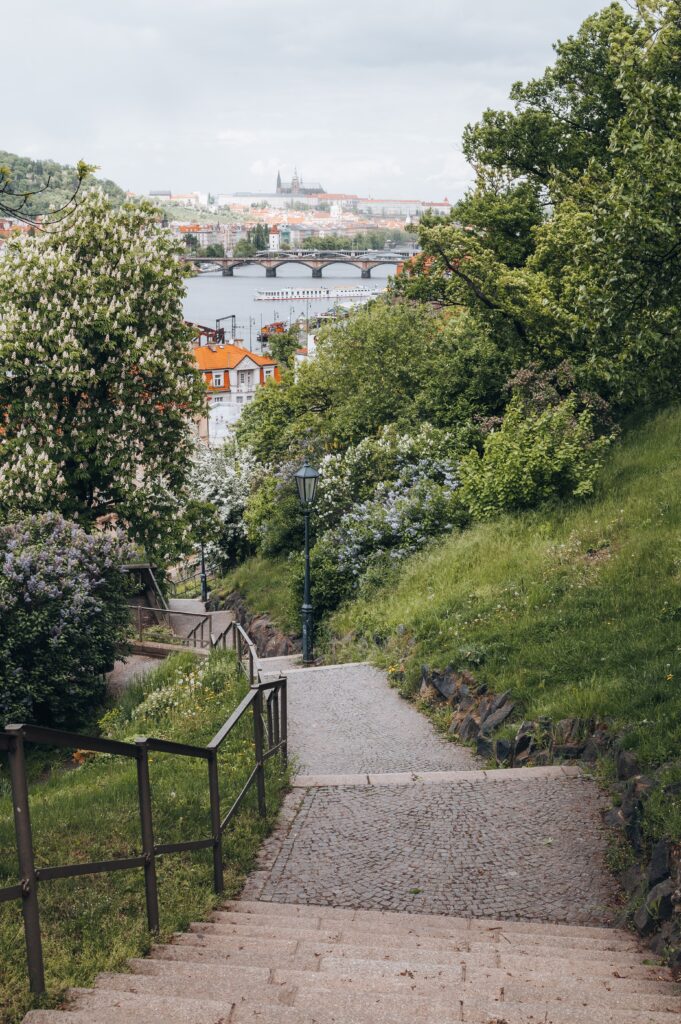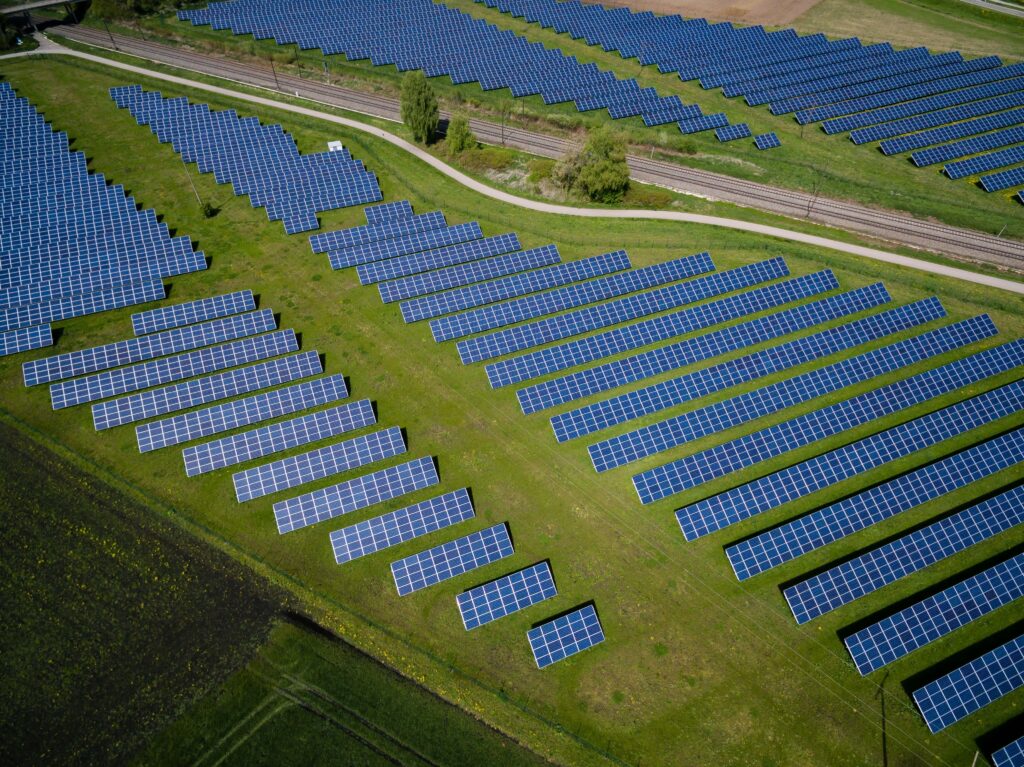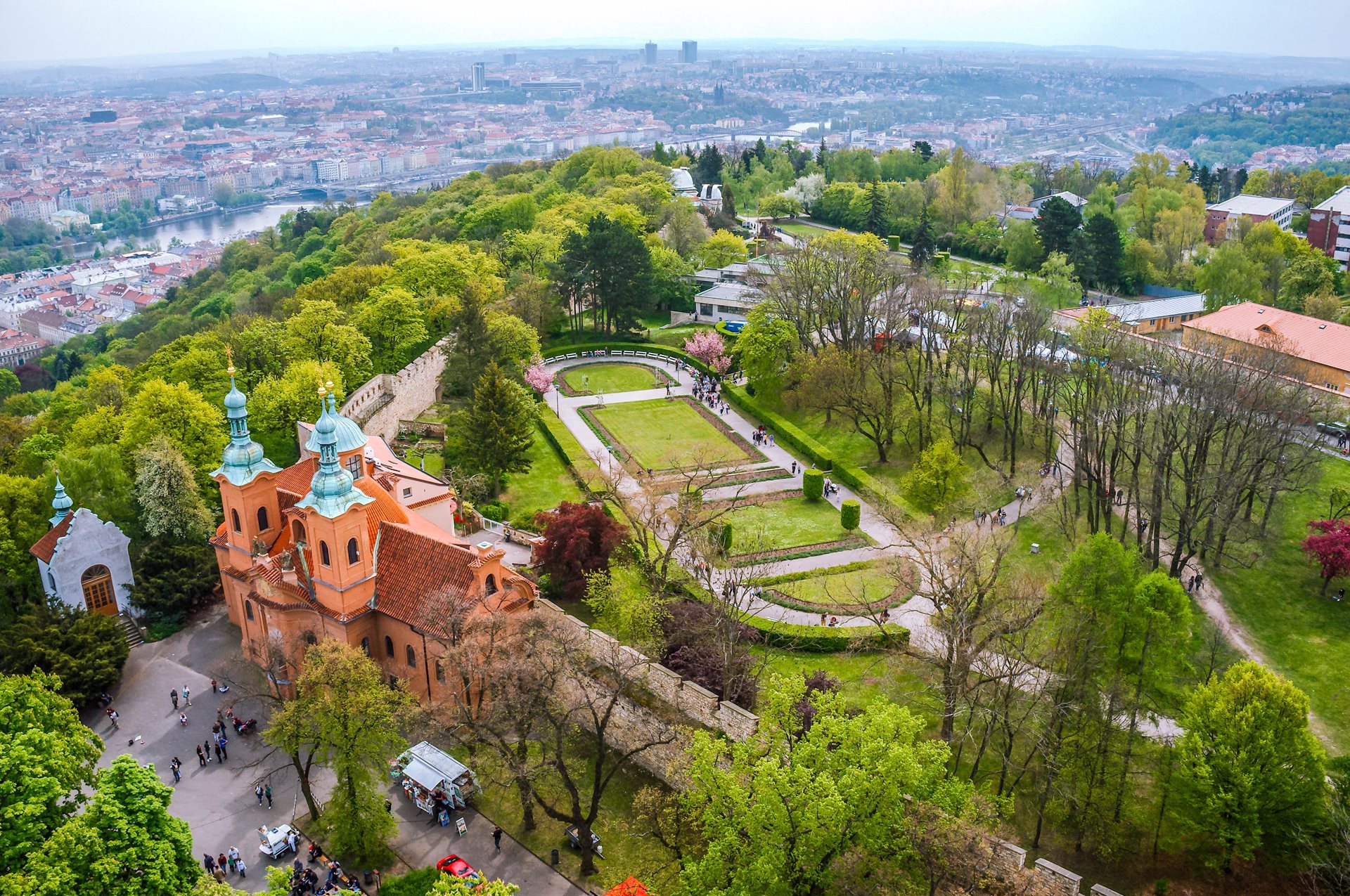One of the reasons why Prague is considered one of the best city where to live is the presence of green areas. In the Czech capital there are 180 square meters of green areas per capita. As the prestigious “Husqvarna Urban Green Space Index” (HUGSI) has shown, Prague occupies 13th place in the world rankings and is among the top 10 in Europe. Green areas cover about 56% of the total area of the Czech capital. From every place it is possible to walk to a park, a green area or a children’s playground.
Between 2008 and 2022, 500 thousands trees have been planted and they are expecting to plant another 500 thousands by the end of 2026, to reach the goal of one thousand trees within 8 years. Trees are essentials for the city life quality: they can help reduce the heat islands in the city, they significantly cool the surroundings, they trap dust, they absorb CO2 and generally make the environment more suitable for life.
The green revolution of the Czech capital also involves other actions: there is the urban water purification plant, a new project to install solar power stations on the roofs of terraced houses, to which are added several projects to support green roofs, facades or so-called vertical greenery.

Prague’s sustainable agenda
The Prague’s mayor, Zdeněk Hřib, believes that, because of the Russian war in Ukraine and the consequent disruption of the world energy market, there is the necessity to transform the EU energetic system and end its reliance on fossil fuels, especially gas from Russia, to address the climate crisis.
These are the reasons why Prague is oriented towards a green economy. The czech sustainable agenda is oriented to energy savings and renewable sources: it expects to reduce the CO2 emissions of the 45% by 2030 and to reach the climate neutrality by the end of 2050. For this motive the Czech government pays great attention on the sustainable mobility and the electrification of the publics transports through electric vehicles, biomethane or various forms of non-motorized transport.
Prague Airport involves its business partners in reducing carbon dioxide emissions
Last year the Prague airport achieved a 72 percent reduction in emissions compared to 2009 and is expected to reach carbon neutrality by 2030. Since 2019, it has also been using green electricity through guarantees of origin for electricity produced from renewable sources. Prague Airport organizes the TOP Sustainable Airline competition in which the entire airline’s approach to sustainability is monitored. Air carriers are thus motivated to deploy new, modern aircraft with lower emission and noise pollution levels on routes to Prague.
A Solar Array the Size of a Football Field in the Centre of Prague
The construction of the largest solar array in the centre of Prague has commenced at the Prague Congress Centre (PCC). A total of 2,080 solar panels will be erected on an area of 7,000 square metres, which will save the Prague Congress Centre CZK 5.5 million a year in electricity costs. The solar power plant will be an addition to one of the largest energy savings projects in the Czech Republic.

Waste management
Prague’s inhabitants and enterprises, appreciating the green city environment, are very aware of the importance of their everyday contribution and complaisance. This results in the high waste recycling rate, with already less than 10 percent of waste ending up in the landfill. The city authorities plan to develop the circular economy further, refining its waste management systems, and, above all, reducing the waste generation: they abandoned single-use plastic packages and tableware at its own events, and abolished all kinds of city support to events that refuse to stop using them.
The Czech Republic, after years of discussion and consideration, is moving toward a mandatory system of returnable plastic bottles and cans. Yesterday, Environment Minister Petr Hladik announced the decision, which promises a significant reduction in the amount of waste abandoned in nature and an increase in the recycling rate of packaging. Thanks to this system, they should be able, within five years of its introduction, to reuse 90% of plastic bottles and cans.
Sources:
https://www.visitczechrepublic.com/it-IT/2ea35d06-6d18-4e95-a1a1-f3f315aeca64/article/n-prague-hugsi





